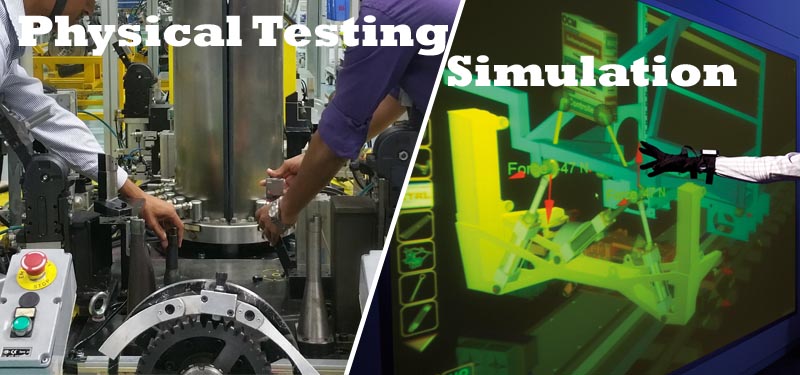Why Physical Testing of Industrial Equipment Will Never Be Sufficient
Posted by: Mehul Patel | Posted on: February 6th, 2016

Industrial equipment manufacturers are struggling to differentiate themselves in today’s tightly competitive market. To remain ahead, it is important for these manufacturers to adopt innovative strategies and right technology to meet the growing customer demands on time. This is where physical tests lag behind; evaluating equipment through physical testing might be considered as a gold standard but is often time consuming and costly.
According to a report from Tech-Clarity, 38% of manufacturers find meeting customer delivery schedules as one the most critical challenge in today’s market conditions. It clearly signals the importance of simulation tools in speeding up the validation process. The same report also says that top performers in the industrial equipment market are 49% more likely to use simulation during the design process, helping them to submit accurate quotes and maintain the delivery schedules effectively.
Problems with Physical Tests
Although important, physical tests have certain demerits that prevent manufacturers from delivering products on time in the market that is extremely dynamic and driven by customer requirements. Physical tests are-
Costly and Time Consuming
Developing a setup to examine the design physically comes at a cost and requires several iterations and trials before finalizing the design. The approach is thus time consuming and also requires skilled resources to obtain meaningful results in the end.
Available Only During the Later Design Stages
One of the problems with physical testing is that these can only be performed when the product design is finally converted into a prototype. In case of any change in the design, the prototype or the component requires to be developed again which increases the cost and time considerably. More the number of iterations, more will be the cost and time consumed.
Not Efficient to Provide the Complete Picture
Most importantly, physical tests never give the full picture of what’s happening with product under the loading condition. At times, it becomes difficult to understand the flow behavior or stress generation at complex points through physical tests.
The Need for Simulation Tools
Through simulation, most of the design tasks are accomplished right from the early stages. Predicting the product behavior, identifying stress concentration regions and determining flow patterns helps in altering the design virtually, without undergoing any physical prototyping. Utilizing the tools like CFD and FEA for design optimization helps in reducing the physical trials.
The finalized design from simulation tests can be used to perform physical test for validation. The cost and time associated with design and testing reduces to almost 70% in many cases, helping industry equipment manufacturers to release their products on time, irrespective of any degree of customization required.
Physical testing as such will never be self-sufficient and will require the assistance of simulation tools. The significance of physical tests however cannot be undermined but can be enhanced through virtual testing approach.
To survive in a highly competitive market, industrial equipment manufacturers must follow the steps of top performers in the industry. They must adopt simulation as often as possible in the early design stages to complement their existing design processes to ensure timely product delivery to their customers and remain ahead in the market.

About Author: Mehul Patel specializes in handling CFD projects for Automobile, Aerospace, Oil and Gas and building HVAC sectors. He works as a CFD consultant with Hi-Tech CFD for the past 5 years and has successfully executed numerous CFD projects of high complexities. He is an expert in turbo-machinery, gas dynamics, Combustion, Fluid Dynamics, multiphase flow analysis, computational fluid dynamics etc.
